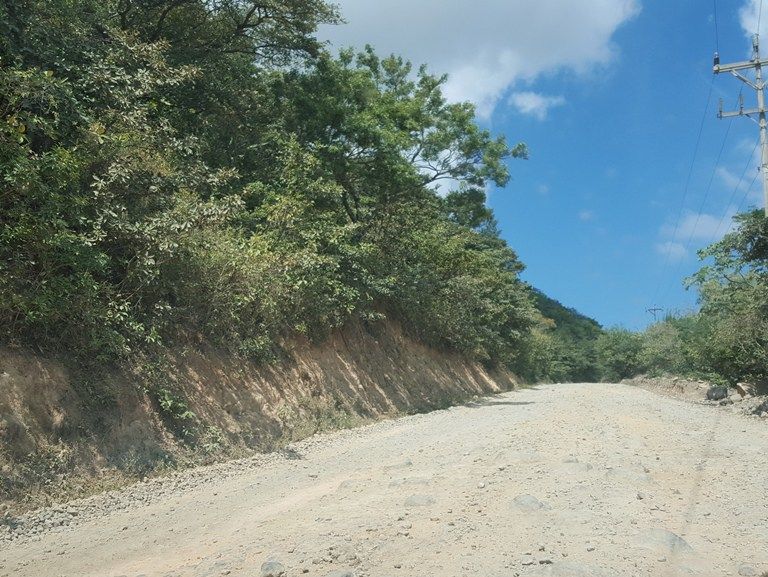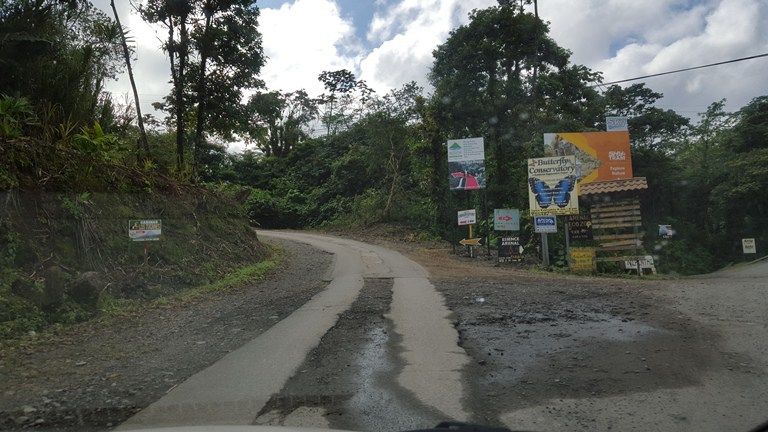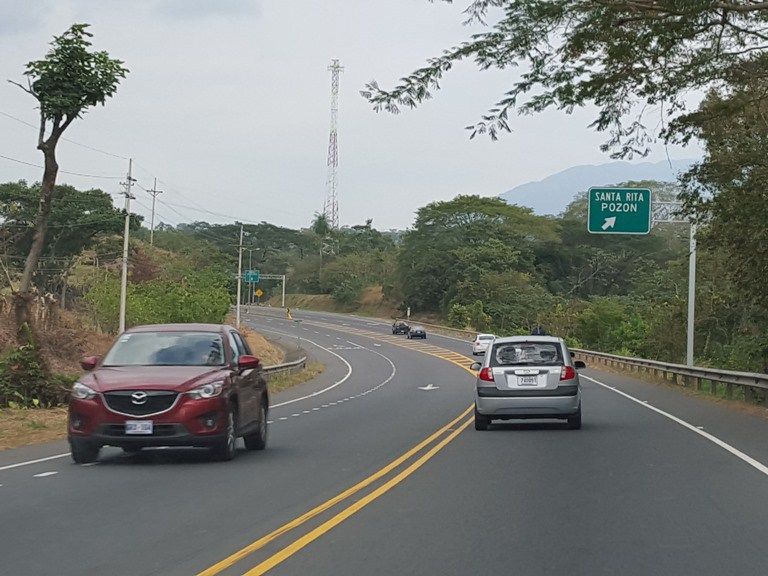Traveling on the roads of Costa Rica
Cartago Province, Costa Rica
The two most frustrating disappointments during an independent trip across Costa Rica were prices and roads. We still have time to talk about prices, but the quality of roads today will not remain without my attention because the negative experience is also an experience, so why not share it. Also, from this post, you will learn about the peculiarities of Costa Rican driving ethics, traffic rules, parking lots, toll roads and other factors related to biking in Costa Rica on a rented motorcycle. I will try not to be dispersed, and to speak out clearly, in essence.
Big and small roads in Costa Rica

Montaverde road
I don't know how it is in other countries of Central America - it's probably worse, but the roads are not the pride of Costa Rica, although I have no doubt that the matter is moving on its own and one day this issue will be closed. However, this problem should only bother you in two cases: you are going to travel the country on motorcycle and in your route is not the most popular among tourists. We have run into both these situations, and therefore there is something to say about this.
We risked renting a motorcycle. And everything would be okay if our plans did not extend beyond the districts of San Jose, Poas volcano, Arenal and La Fortuna, Manuel Antonio and Cahuita - there are no complaints about these areas, but we even went further. And the most problematic areas on our way were:
- 606 road to Monteverde (before and after the National Park);
- No-name road to the National Park of the Tenorio Volcano.
Both these unpleasant roads are marked on the map. And this despite the fact that we deliberately did not go to the Santa Rosa and Chirippo National Park because of the lousy access and once more we had to return, without visiting the small park that lay on our path. How many "non-public" roads in Costa Rica we can only guess.
What do I understand about "bad roads in Costa Rica"? Costa Rican road of the lowest destination is not covered with gravel, but for some reason, it is stuck with cobblestones and boulders, on which SUV tourists go 30 km/h. Also, do not forget that in a mountainous country - mountain roads, i.e. serpentine, sometimes even very steep.
How did we manage to be in such a place on a motorcycle? It's straightforward: there is an expensive hotel where we have booked a night - who would have thought that only jeep can reach this hotel? It turns out that this happens. By the way, to one of the most famous hotels "Arenal Observative Lodge", where the price for one standard room exceeds 500 USD per night.
About the most terrible told, but now you can relax. There are standard primers in the country... The most dangerous sections of the road (hazardous for life, not a vehicle) are secured. Some small cities are paved with tiles - which is better than their priming.
Again I repeat that many areas of Costa Rica are located around the volcanoes, the road there is serpentine. If the situation is critical, and you do not see and do not hear the rare oncoming traffic, repeat for us: signal at the entrance to the turn. Also, do not forget to throw off the engine on long descents, so as not to overheat the brakes.
Another feature of the Costa Rican roads is the almost ubiquitous absence of roadsides with a rather narrow roadway - in this respect, the motorcycle was a smart decision.
Sharp change in the quality of the roadway is wery dissapointing: a terrible dirt road can pass into the brand new asphalt as unexpectedly, as well as vice versa. This is only one of several reasons not to move to new places at night, which I already told in the post about planning a route through Costa Rica.
Basic traffic rules

Traffic Costa Rica
- The maximum speed limit, which we saw - 90 km/h. In settlements and even less - 50-60 km/h. But, as the local Europeans warned us, it's OK to exceeding the speed of +20 km/h. But for +40 km/h and more you can be fined or imprisoned.
- Very often on your way, there will be settlements and in each of them - a school zone with yellow signs and markings saying "25 km/h con escolares presentes".
- Most of the bridges in Costa Rica are single-lane, with one of the lanes having to pass cars moving towards them, which is established by the "Ceda" sign.
- Signs and speed limits are often duplicated on the asphalt, which is very convenient.
- Before bridges, settlements, police posts, and simply where you can stumble upon a lying policeman, which is sometimes indicated by the appropriate sign and yellow markings, and sometimes it is not visible at all.
Features of Costa Rican driving

Roads in Costa Rica
What surprised me, local drivers. All drivind at speeds, much more than the limit, and overtake at the first slightest opportunity, often at the risk of their lives.
Also, do not turn off your vigilance in the presence of other cars: disembarking the passenger right after the turn or on the bridge - it's common here.
For all the time we were stopped by traffic police just once within the framework of the general verification of documents. In general, tourists report gigantic fines, so ten times you think before you break the law.
Nuances of the road
- In the area of San Jose, we met toll roads. The fare was a penny, something around 1 USD - yes, it's not Mexico. Payment by cash to a person.
- Gasoline cost around 1.36 USD per liter, there was no difference in price from refueling to refueling.
- We had no problems with security.
- Parking facilities are both paid and free - I'll tell you more about them in the posts about each site separately.
- As a navigator, we used a smartphone with offline maps Google.
You must be logged in to comment
Login now